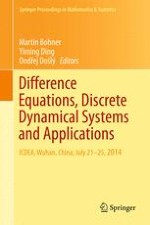These proceedings of the 20th International Conference on Difference Equations and Applications cover the areas of difference equations, discrete dynamical systems, fractal geometry, difference equations and biomedical models, and discrete models in the natural sciences, social sciences and engineering.
The conference was held at the Wuhan Institute of Physics and Mathematics, Chinese Academy of Sciences (Hubei, China), under the auspices of the International Society of Difference Equations (ISDE) in July 2014. Its purpose was to bring together renowned researchers working actively in the respective fields, to discuss the latest developments, and to promote international cooperation on the theory and applications of difference equations.
This book will appeal to researchers and scientists working in the fields of difference equations, discrete dynamical systems and their applications.
